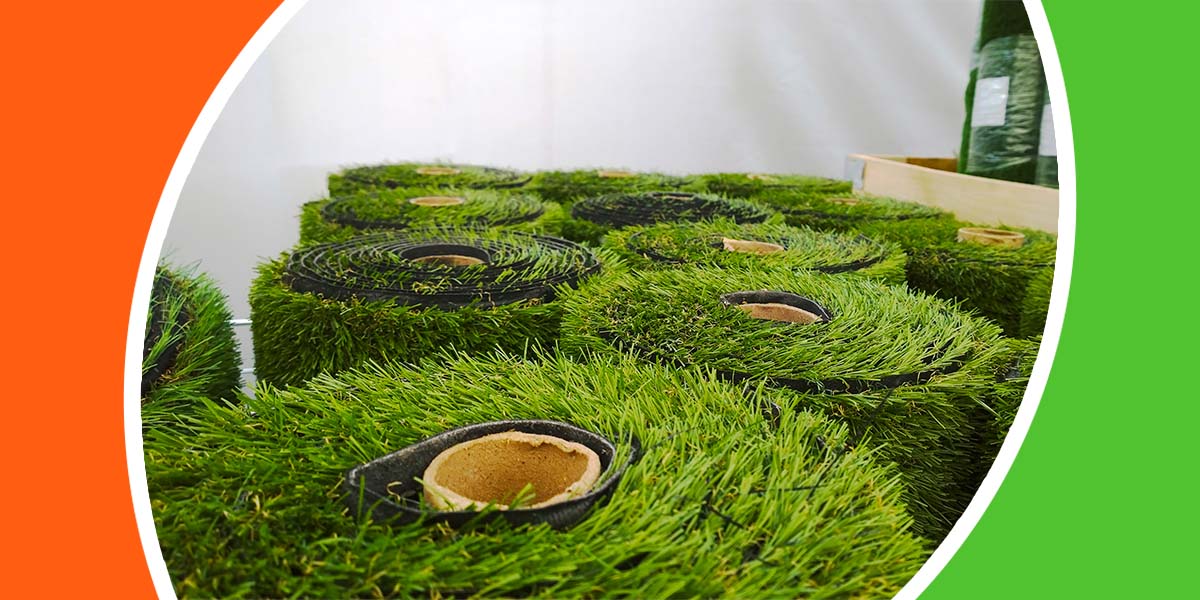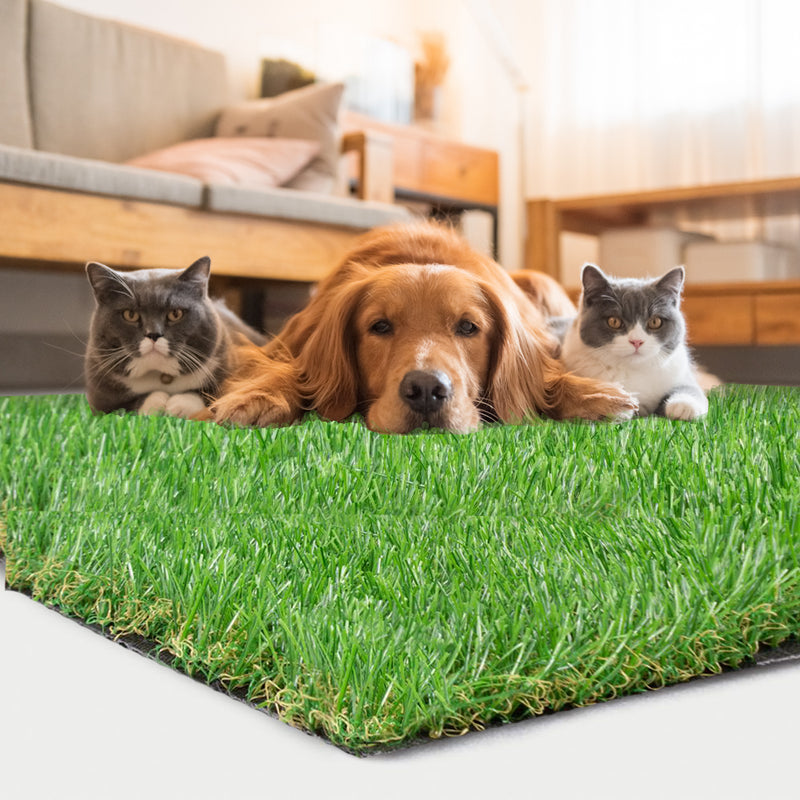Look Into the Environmental Advantages of Opting for Synthetic Grass Solutions
The adoption of synthetic grass solutions presents a compelling chance to resolve pushing environmental difficulties. By dramatically lowering water use and reducing the application of harmful chemicals, these options not just advertise lasting landscaping however also secure regional ecosystems. The lower carbon footprint connected with reduced maintenance activities adds to a more sustainable approach to land monitoring. The ramifications of these benefits expand past mere conservation efforts, increasing concerns concerning their long-lasting impact on habitat preservation and overall environmental balance. Exploring these dimensions exposes a complex interaction worth taking into consideration.
Water Preservation Conveniences
One of the most considerable benefits of synthetic turf is its capacity to save water. In contrast, fabricated grass does not require watering, significantly minimizing the total need for water sources.
By getting rid of the need for regular watering, man-made lawn adds to lasting landscape practices and helps minimize the ecological effect of extreme water intake. In addition, the conservation of water includes the decrease of overflow, which can lead to soil disintegration and waterway contamination.
Additionally, the installation of synthetic grass allows home owners and communities to assign water sources a lot more effectively, concentrating on necessary uses such as alcohol consumption water and agriculture. The shift towards synthetic lawn not just advertises accountable water use yet also straightens with wider environmental objectives aimed at preserving natural deposits.
As communities significantly prioritize sustainability, the water conservation advantages of fabricated grass present a compelling situation for its fostering in business and domestic landscape design jobs.
Decreased Chemical Use
The change to synthetic lawn substantially lowers the reliance on chemical treatments frequently utilized in natural turf maintenance. Traditional grass monitoring generally entails the application of herbicides, pesticides, and fertilizers to promote growth and control bugs. These chemicals can posture risks to human wellness, neighborhood wild animals, and the environment, contributing to soil and water contamination.
In contrast, fabricated grass eliminates the requirement for these harmful compounds. By decreasing the launch of synthetic substances right into the ecosystem, synthetic turf promotes much healthier dirt and water systems.
In addition, the lack of chemical runoff connected with man-made grass installments aids secure regional rivers from air pollution, sustaining water life and keeping biodiversity. Arizona turf. As areas significantly prioritize sustainable practices, deciding for artificial grass provides a practical service that lines up with environmental conservation objectives. Via this shift, residential property proprietors can delight in lush green rooms without jeopardizing ecological health and wellness, leading the means for an extra lasting future
Reduced Carbon Impact

Additionally, the setup of synthetic grass can result in considerable water conservation. All-natural grass call for considerable amounts of water for irrigation, which not just contributes to the carbon impact associated with water removal and treatment yet also strains neighborhood water resources. On the other hand, fabricated grass requires minimal upkeep, needing no watering, therefore significantly lowering water use and its linked energy costs.
Furthermore, the durability of fabricated grass adds to its lower carbon influence. With a lifespan of up to 15 years or even more, the demand for regular substitutes is reduced, leading to much less waste and lower power consumption in manufacturing and throwing away standard grass alternatives. On the whole, synthetic grass presents a sustainable option for ecologically mindful landscape design.
Habitat Conservation
Habitat preservation is an important factor to consider in the debate over landscape design choices, specifically when comparing synthetic grass to natural yard. Natural lawn yards typically need considerable maintenance, including making use of herbicides, pesticides, and plant foods, which can adversely affect navigate to this site regional ecosystems. These chemicals can seep right into the soil and waterways, hurting native plants and animals and disrupting regional habitats.
On the other hand, synthetic turf presents a chance to minimize the eco-friendly impact of landscape design. By going with synthetic yard, homeowners can lessen the interruption of natural habitats associated with conventional grass care practices. Synthetic grass eliminates the demand for hazardous chemicals, consequently safeguarding close-by wildlife and keeping the honesty of bordering communities. The installation of man-made turf can lead to the conversion of former yard locations into even more biodiverse landscapes, such as pollinator yards or indigenous plant locations, which can sustain neighborhood wild animals.
Ultimately, the shift to synthetic grass not only saves water and lowers maintenance efforts yet additionally promotes a much more harmonious connection in between human activities and the all-natural environment, advertising habitat conservation in the process.
Long-Term Sustainability
Long-term sustainability is a crucial factor in reviewing the advantages of synthetic grass over standard turf lawns. Among the most substantial advantages of artificial grass is its toughness; it can last as much as 15-20 years with marginal maintenance, whereas all-natural turf needs regular reseeding and replacement. This long life lowers the requirement for constant sources, such as water, fertilizers, and pesticides, which are necessary for preserving a healthy and balanced turf yard.
Additionally, synthetic grass contributes to a decrease in carbon exhausts connected with grass care equipment. Conventional lawns often need gas-powered mowers, trimmers, and blowers, all of which add to air pollution. Phoenix turf companies. On the other hand, synthetic grass gets rid of the demand for such devices, advertising a cleaner environment
Additionally, the manufacturing of synthetic grass significantly makes use of recycled materials, enhancing its sustainability profile. As manufacturers take on environment-friendly techniques, the ecological footprint of man-made turf remains to lessen.

Conclusion
The adoption of artificial turf services offers significant environmental benefits, consisting of substantial water preservation, decreased dependence on damaging chemicals, and a lower carbon footprint. Man-made grass help in protecting all-natural habitats by decreasing land disruption and promoting long-term sustainability via the use of resilient products. Collectively, these factors highlight the possibility look these up of synthetic grass to add positively to environmental health and wellness and use a feasible alternative to conventional landscape design techniques in a progressively resource-conscious world.
In contrast, artificial grass does not require watering, considerably lowering the overall need for water resources. By minimizing the launch of synthetic compounds right into the ecosystem, artificial turf advertises much healthier dirt and water systems.
Furthermore, the installment of man-made turf can result in considerable water conservation. In comparison, man-made lawn needs very little upkeep, requiring no watering, thus substantially decreasing water usage and its linked energy expenses.
